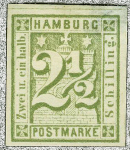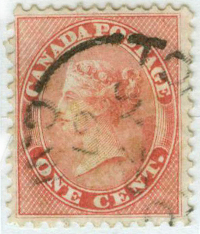
Discussion - Member to Member Sales - Research Center

Discussion - Member to Member Sales - Research Center

Scott indicates that the 2p was issued in 1922 and the other denominations were issued in 1923. I noticed that at the bottom, between the numbers the word "pinsin" appears on both stamps. However on the 2p, the word "pinsin" is preceded by what appears to be an OA (some what modified at the top with other characters.
My question is, is the 2p the only denomination in that set that has the characters and because it was issued in 1922 instead of 1923? What do the characters mean? I do not collect Ireland and know nothing other that what is in the Scott catalogue. However wanted to make sure I did not discover some rare error while sorting a big pile that was going to make me rich.


Thanks for the help

Login to Like
this post

05:18:39pm
The bad news is you have to keep your day job.
Each of the values up to 1 shilling use the word "pinsm" with a different modifier except for the 1d value which is one pinsm, so it doesn't need the modifier.
The 2d value uses OA preceding pinsm, which is most likely Gaelic for 2 pence.

Login to Like
this post
Well 
Tom, thanks for the response. I knew there had to be some reason for the difference. As I said, do not collect Ireland, but when sorting piles of foreign stamps have to look at each one. Didn't think I would win the Irish sweep stakes.
Regards, Mel

1 Member
likes this post.
Login to Like.
Hi
Just to let you know We used to have our own Irish script which we see on the two stamps in question, but we changed our script to Western European sometime in the late 50's or early 60's
Da = 2 ( there is a dot over the "d" and what we call a fada ( accent) over the "a"
So today we spell it "dha" Instead of having the dot over the letter we use "h"
Pingin = penny there is a dot over the "p" and the "g" so we now spell it "dha phinghin"
One penny stamp does not have the dot over the "p" because there is no numeral before it
This interpretation is from my school Irish I could be corrected by a native Irish speaker Heaven help me
John

1 Member
likes this post.
Login to Like.
John,
Thank you for that full explanation. I even thought the letter in pin(g)in was an "s", giving pinsin instead of pingin. Believe I will stick with my WF.
Mel

Login to Like
this post
Hi Mel
I had to correct your spelling or people might get the wrong impression as to what we called our money all those years ago lol
Keep it country
John

Login to Like
this post
Also you should realise that while the Irish expression for pence does begin with a p it is actually in English a d- as in dinarius the symbol for the pre-decimal penny in the UK.
Although Ireland did have it's own currency ( notes and coins), it was in the sterling area and tied to the UK pound at parity. Although coins were not acceptable in the UK they were identical in size, shape and weight ( rather like the US and Canada) - and were much (mis)used in vending machines,or in transactions by weight. In large cities in the UK establishments often ( but not always ) accepted the Punt at parity as the banks did not charge an exchange rate.They were obliged to "go decimal" at the same time as the UK
Of course once the Irish government de-linked the Punt from the £ sterling, it then became a "foreign" currency, and for the first time Ireland was economically as well as politically independent. Of course Ireland now uses the Euro.
There is much concern both in Ireland and the UK as to the future trade and economic links between the UK and Ireland after BREXIT because of the very high level of trade. Also citizens of the Irish Republic always had more resident status in the UK prior to the EU than other overseas citizens, and there is also concern that these rights will be lost,along with those of the other EU citizens who have only had them since the UK joined the EU.
Malcolm

Login to Like
this post

Please see scans.
Scott indicates that the 2p was issued in 1922 and the other denominations were issued in 1923. I noticed that at the bottom, between the numbers the word "pinsin" appears on both stamps. However on the 2p, the word "pinsin" is preceded by what appears to be an OA (some what modified at the top with other characters.
My question is, is the 2p the only denomination in that set that has the characters and because it was issued in 1922 instead of 1923? What do the characters mean? I do not collect Ireland and know nothing other that what is in the Scott catalogue. However wanted to make sure I did not discover some rare error while sorting a big pile that was going to make me rich.


Thanks for the help

Login to Like
this post
Collecting King George VI from all countries, and King Edward VII and King George V from the West Indies.
13 Jul 2018
05:18:39pm
re: Ireland Scott #66 and 68
The bad news is you have to keep your day job.
Each of the values up to 1 shilling use the word "pinsm" with a different modifier except for the 1d value which is one pinsm, so it doesn't need the modifier.
The 2d value uses OA preceding pinsm, which is most likely Gaelic for 2 pence.

Login to Like
this post

re: Ireland Scott #66 and 68
Well 
Tom, thanks for the response. I knew there had to be some reason for the difference. As I said, do not collect Ireland, but when sorting piles of foreign stamps have to look at each one. Didn't think I would win the Irish sweep stakes.
Regards, Mel

1 Member
likes this post.
Login to Like.

re: Ireland Scott #66 and 68
Hi
Just to let you know We used to have our own Irish script which we see on the two stamps in question, but we changed our script to Western European sometime in the late 50's or early 60's
Da = 2 ( there is a dot over the "d" and what we call a fada ( accent) over the "a"
So today we spell it "dha" Instead of having the dot over the letter we use "h"
Pingin = penny there is a dot over the "p" and the "g" so we now spell it "dha phinghin"
One penny stamp does not have the dot over the "p" because there is no numeral before it
This interpretation is from my school Irish I could be corrected by a native Irish speaker Heaven help me
John

1 Member
likes this post.
Login to Like.

re: Ireland Scott #66 and 68
John,
Thank you for that full explanation. I even thought the letter in pin(g)in was an "s", giving pinsin instead of pingin. Believe I will stick with my WF.
Mel

Login to Like
this post

re: Ireland Scott #66 and 68
Hi Mel
I had to correct your spelling or people might get the wrong impression as to what we called our money all those years ago lol
Keep it country
John

Login to Like
this post
08:30:27am
re: Ireland Scott #66 and 68
Also you should realise that while the Irish expression for pence does begin with a p it is actually in English a d- as in dinarius the symbol for the pre-decimal penny in the UK.
Although Ireland did have it's own currency ( notes and coins), it was in the sterling area and tied to the UK pound at parity. Although coins were not acceptable in the UK they were identical in size, shape and weight ( rather like the US and Canada) - and were much (mis)used in vending machines,or in transactions by weight. In large cities in the UK establishments often ( but not always ) accepted the Punt at parity as the banks did not charge an exchange rate.They were obliged to "go decimal" at the same time as the UK
Of course once the Irish government de-linked the Punt from the £ sterling, it then became a "foreign" currency, and for the first time Ireland was economically as well as politically independent. Of course Ireland now uses the Euro.
There is much concern both in Ireland and the UK as to the future trade and economic links between the UK and Ireland after BREXIT because of the very high level of trade. Also citizens of the Irish Republic always had more resident status in the UK prior to the EU than other overseas citizens, and there is also concern that these rights will be lost,along with those of the other EU citizens who have only had them since the UK joined the EU.
Malcolm

Login to Like
this post

